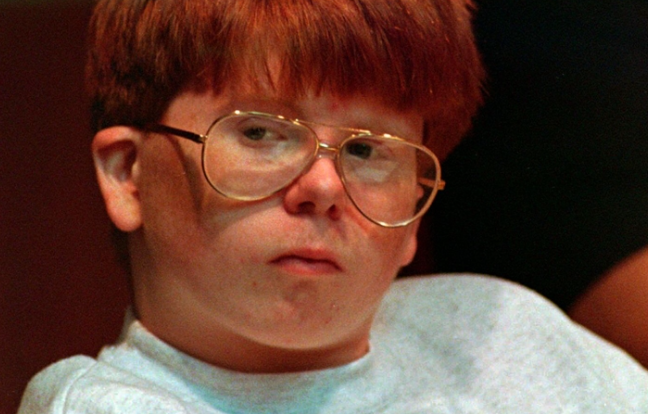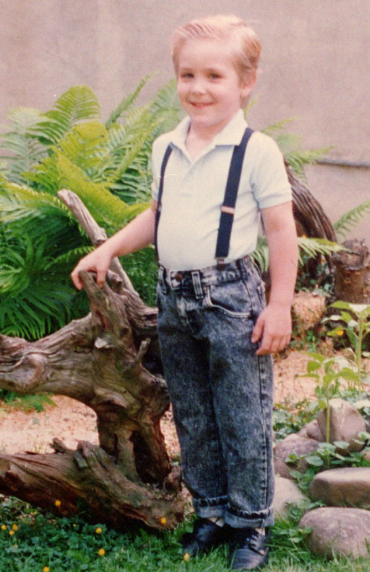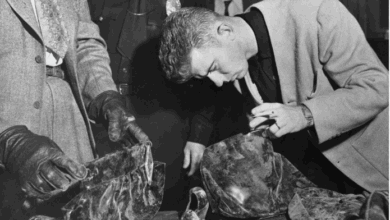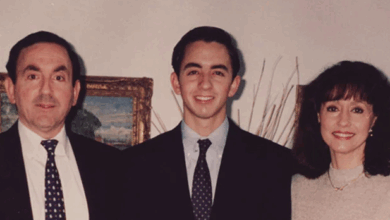The Eric Smith Case (1993): A Chilling Tale of Youth and Violence

The Eric Smith Case (1993): A Chilling Tale of Youth and Violence
In the annals of American criminal history, few cases have stirred such a combination of shock, sorrow, and controversy as that of Eric Smith. The 1993 murder committed by Smith, who was just 13 years old at the time, left an indelible mark on the public consciousness, not only due to the brutality of the crime but also because of the disturbing questions it raised about juvenile violence and justice. This case highlighted the complexities of dealing with severe crimes committed by children and triggered national debates on how such offenders should be tried and rehabilitated.
Background: Who Was Eric Smith?

Eric M. Smith was born on January 22, 1980, in Steuben County, New York. He grew up in the small, quiet town of Savona, a tight-knit rural community where violent crime was virtually unheard of. From the outside, Smith appeared to be an ordinary boy, though he was described by many as shy and somewhat socially awkward. He had red hair and wore thick glasses, features that unfortunately made him the target of relentless bullying by peers. Schoolmates teased him for his appearance and perceived odd behavior.
Teachers and psychologists later noted that Eric had difficulty managing his emotions and exhibited signs of rage, which were possibly exacerbated by undiagnosed mental health issues. He came from a relatively stable home, but some speculated that feelings of isolation and frustration were building up inside him.
The Murder of Derrick Robie
On August 2, 1993, the small town of Savona was rocked by a horrifying tragedy. Four-year-old Derrick Robie, a cheerful and well-loved child, was walking to a summer day camp held at a nearby park—something his mother had allowed for the first time that day. Tragically, Derrick never made it.
As he made his way to the park, Derrick encountered Eric Smith. Smith lured the younger boy off the path and into a wooded area. What happened next was an act of unspeakable violence. Eric Smith brutally assaulted Derrick, strangled him, and ultimately killed him by crushing his head with a large rock. He then arranged the boy’s body in a disturbing manner and left the scene, later returning home as if nothing had happened.
The crime stunned the community. Derrick was reported missing shortly after he failed to arrive at the camp, and his body was found later that day in the woods. Law enforcement officials were shocked by the brutality of the murder and initially suspected an adult perpetrator. The idea that a child could be responsible seemed almost unthinkable.

The Investigation and Confession
In the days following the murder, police questioned several individuals, including Eric Smith, who had attended the same day camp. Initially, Smith did not raise suspicions, but over time, inconsistencies in his statements and behavior led investigators to focus on him.
Four days after the murder, Smith confessed to the crime. His confession was chilling and detailed. He admitted that he had chosen Derrick at random and described the sequence of events in horrifying clarity. According to his statements, the rage he had bottled up from years of bullying and rejection exploded that day in an uncontrollable act of violence.
Smith’s confession shocked not only the community but also the entire country. The question arose: How could a 13-year-old boy be capable of such savagery?
Trial and Conviction
Because of the severity of the crime, prosecutors decided to try Eric Smith as an adult. This decision sparked national debate. On one side, many believed that someone who committed such a heinous act deserved to be punished to the full extent of the law, regardless of age. On the other, advocates for juvenile justice argued that children lacked the maturity and psychological development to be held fully accountable like adults.
The trial began in 1994, and Smith pleaded not guilty by reason of insanity. His defense team presented expert witnesses who testified that Eric suffered from intermittent explosive disorder—a mental condition that leads to sudden episodes of extreme aggression. However, the prosecution argued that the attack was premeditated and deliberate, emphasizing the methodical way Smith lured Derrick and concealed the body.
The jury ultimately found Eric Smith guilty of second-degree murder. He was sentenced to the maximum term allowed for a juvenile at the time: nine years to life in prison.
Life in Prison and Parole Hearings

Eric Smith was incarcerated at a juvenile detention facility until he turned 21, after which he was transferred to an adult prison. Over the years, he became a model prisoner, earning a high school diploma and even taking college courses. Despite his apparent rehabilitation, Smith was denied parole repeatedly—ten times between 2002 and 2020.
At each parole hearing, Derrick Robie’s parents passionately opposed his release, expressing their enduring grief and concern about the danger Smith could pose if freed. Prosecutors and many members of the public echoed their concerns, believing that someone who had committed such a monstrous act at 13 could never truly be rehabilitated.
Release and Public Reaction
In October 2021, after 28 years in prison, Eric Smith was granted parole. He was released in February 2022 at the age of 42. The decision was met with widespread controversy. Supporters of his release pointed to his good behavior in prison, his remorse, and the decades he had already served. Opponents, however, questioned whether he could ever truly reintegrate into society or be trusted outside the highly structured environment of incarceration.
Smith expressed deep remorse for his crime and stated his desire to live a quiet, peaceful life. He acknowledged the pain he had caused and claimed that he had changed significantly from the impulsive, rage-filled teenager he once was.
Psychological and Societal Implications
The Eric Smith case forced American society to confront difficult questions about juvenile crime, punishment, and rehabilitation. It highlighted how bullying and untreated mental health issues can manifest in tragic ways. The case also reignited debates around whether children should ever be tried as adults—a subject that remains hotly contested.
Experts continue to study Smith’s case in the context of adolescent brain development and criminal behavior. Research has shown that teenage brains, especially those under the age of 16, are not fully developed in terms of impulse control, empathy, and decision-making. This raises concerns about whether lifetime sentences or adult trials are ethically appropriate for juvenile offenders.
Legacy of the Case
The murder of Derrick Robie left a permanent scar on the town of Savona and on all those who followed the case. Derrick’s parents have worked to keep his memory alive while advocating for victims’ rights. The pain of their loss is unimaginable, and their courage in speaking out over the decades is deeply moving.
Eric Smith’s story serves as a grim reminder of the potential for violence in even the most unexpected individuals. At the same time, it challenges the justice system to balance accountability with the possibility of redemption, particularly when dealing with children.
Conclusion
The 1993 murder committed by Eric Smith remains one of the most harrowing examples of juvenile crime in American history. It is a case marked by tragedy on all sides: a young child senselessly murdered, a teenager whose life took a dark and irreversible turn, and families whose lives were shattered forever. It continues to be a powerful case study in the complexities of justice, the impacts of bullying and mental health issues, and the deep moral questions surrounding crime and punishment.





